Why serverless matters for ambitious US-based small and midsize businesses
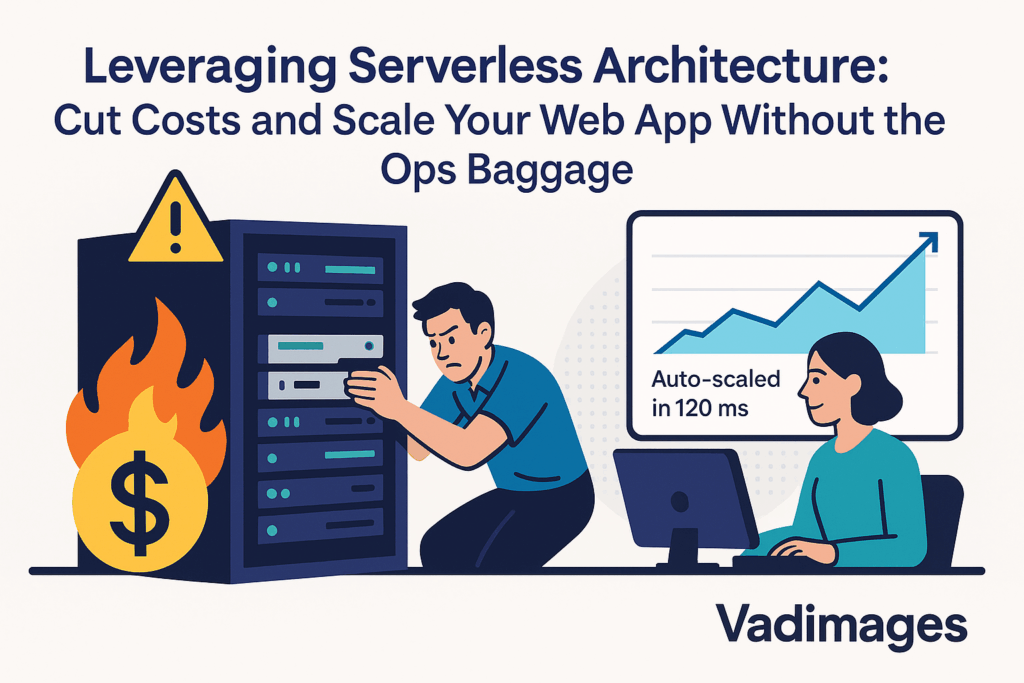
The traditional path to launching a custom web application still forces founders to budget for virtual machines, containers, auto-scaling groups, security patching, and 24 × 7 monitoring. Those line items are painful when you are pre-Series A, running on tight cash flow, or spinning up a new revenue experiment inside an already stretched family business. Serverless computing—services such as AWS Lambda, Azure Functions, Google Cloud Functions, Firebase, and Vercel Edge Functions—reframes that burden. Instead of paying for idle CPU hours, you pay only for the milliseconds your code actually runs, and the platform scales to meet spikes you have not even predicted. The result is a cloud bill that looks a lot more like utilities than capital expense, while the operations team in effect becomes the hyperscale provider’s problem. For US small and midsize enterprises chasing nationwide reach, compliance, and quick iteration, this elasticity can be the difference between a stalled pilot and a product that captures the market window.
Real-world cost and scale advantages you can bank on
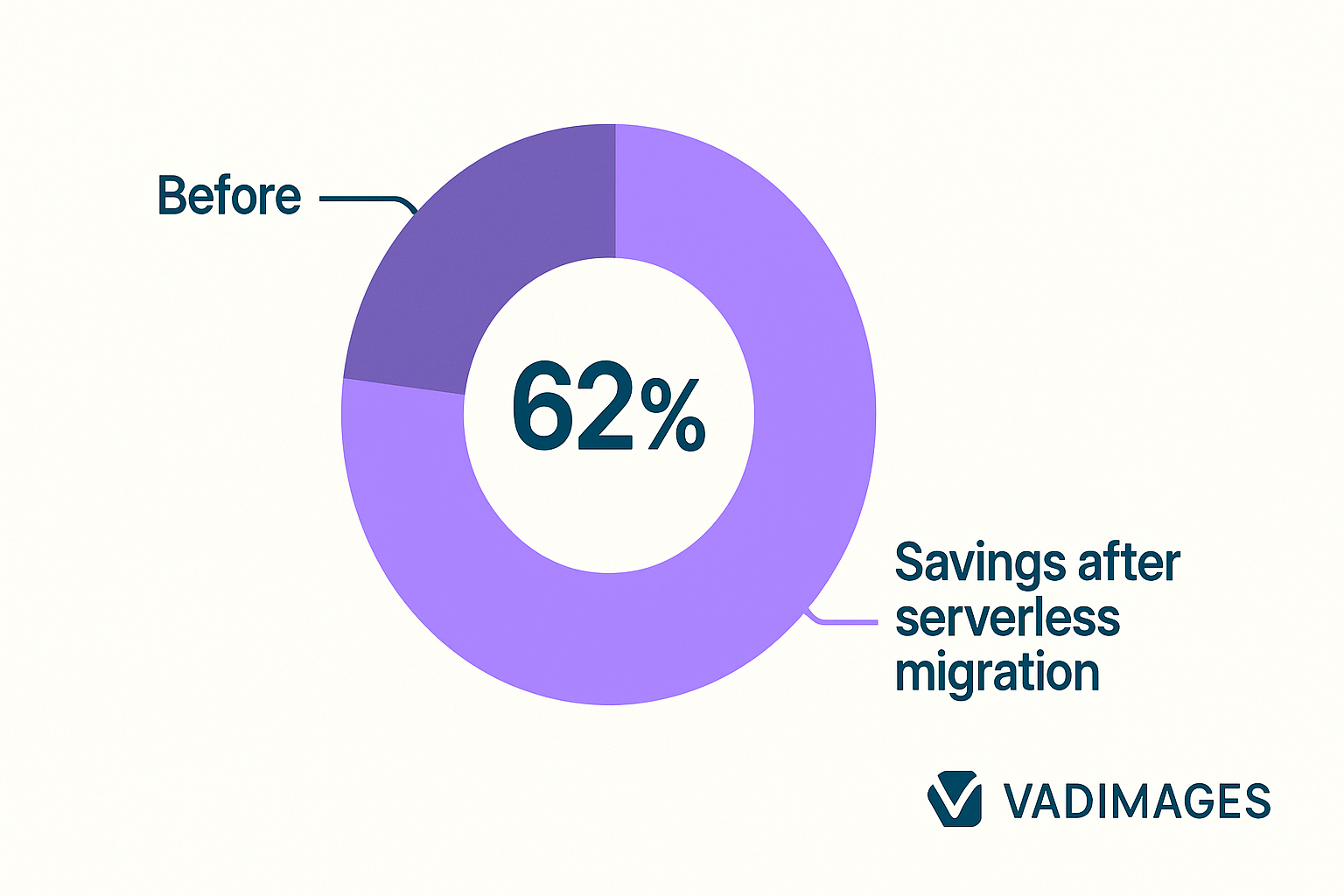
In the first ninety days of a typical MVP life cycle we see three phases: silence while you refine the core feature, a sudden jump during your first marketing push, and an unpredictable plateau as real customers test the edges. Serverless billing aligns with each phase. During silence you pay pennies because nothing runs; during the jump the platform scales from tens to thousands of concurrent invocations in seconds without you scrambling to resize clusters; during the plateau you harvest accurate usage metrics that convert directly into unit-economics models investors understand. Case studies across ecommerce, legal-tech SaaS, and logistics micro-services repeatedly show operating-cost reductions of thirty to seventy percent when moving from container-based autoscaling to Lambda-powered endpoints. Just as important, the architecture accelerates feature velocity: blue-green deployments take minutes, rollback is a version flag, and latency is shaved by locating functions at edge regions closer to the customer. For a Boston boutique retailer adding a viral TikTok-driven flash sale at midnight Pacific time, or a Dallas med-tech startup complying with HIPAA audit trails during an unexpected surge, the ability to scale limitlessly without calling an engineer after hours is no longer a luxury—it is a survival feature.
From prototype to nationwide launch with Vadimages as your serverless partner
Serverless is not a magic checkbox; it requires thoughtful design around cold-start latency, state management, and observability. Vadimages works with growth-stage US companies to translate business requirements into resilient event-driven architectures: we map customer journeys to API Gateways, design global edge caches that slash time-to-first-byte, and wire business logic into Functions-as-a-Service that speak the language of your CRM, payment gateway, or supply-chain ERP. Our team has deployed subscription billing engines on AWS Lambda that process seven-figure annual revenue streams at under one percent infrastructure overhead; we have migrated resource-intensive image-processing pipelines to Cloudflare Workers that now finish in under two seconds anywhere in the contiguous United States; and we routinely integrate Firebase Authentication with Next.js to deliver sub-second personalized storefronts. When you partner with Vadimages you gain senior cloud architects, DevOps automation, and a continuous-delivery pipeline tuned for PCI-DSS, SOC 2, or HIPAA as your industry demands—without adding full-time headcount.
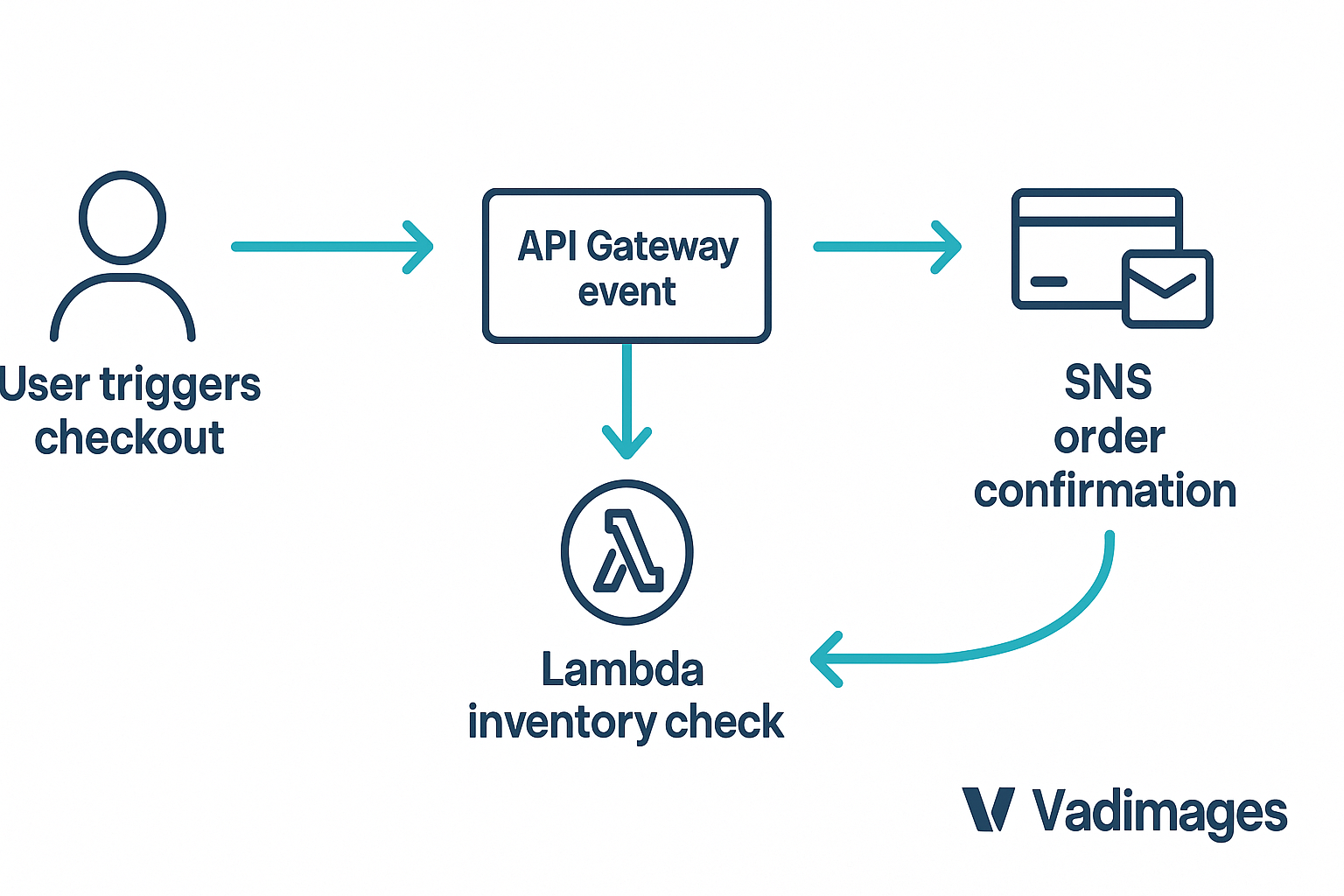
A hero infographic ready for your marketing deck captures this transformation: on the left, a cluttered on-premises server rack clicks up energy costs while an ops engineer frantically swaps a failed disk; on the right, a calm dashboard shows a soaring real-time usage graph with the caption “Auto-scaled in 120 ms,” the Vadimages logomark anchoring the bottom corner. A flowchart threads teal-and-indigo arrows from “User triggers checkout” to “API Gateway event” to “Lambda inventory check” to “Stripe payment,” then fans out to “SNS order confirmation,” illustrating the event stream visually familiar to non-technical stakeholders. A donut chart overlays old and new cost structures, highlighting a sixty-two-percent slice labeled “Savings after serverless migration.” Finally, a wide call-to-action banner propels a glowing “Book Your Serverless Blueprint Call” button toward animated cloud and dollar-sign icons under the headline “Ready to Pay Only for What You Use?”
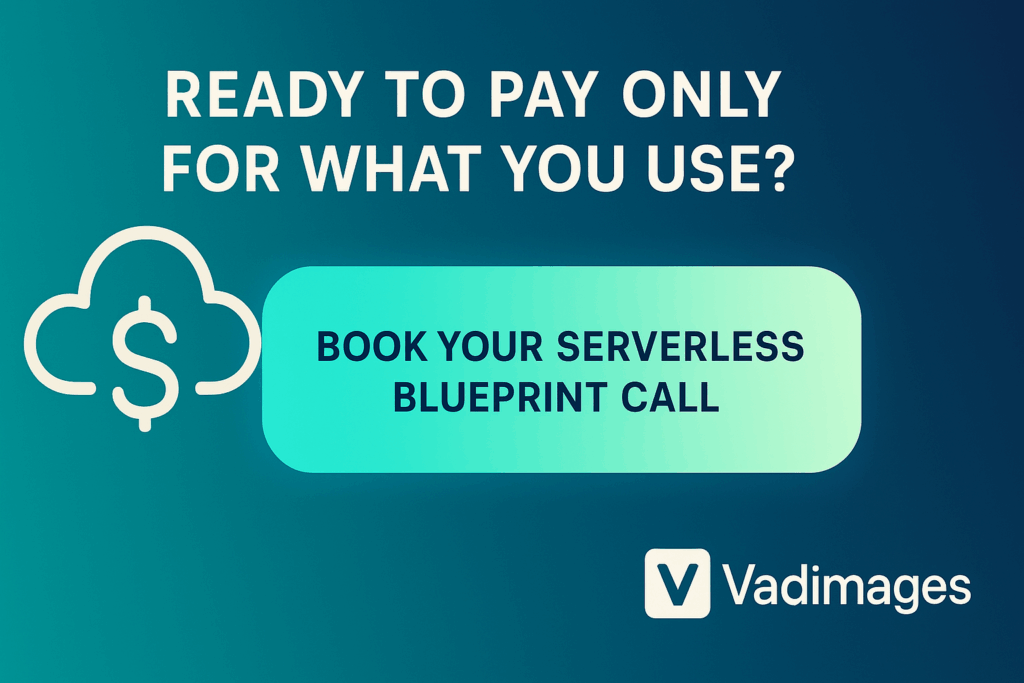
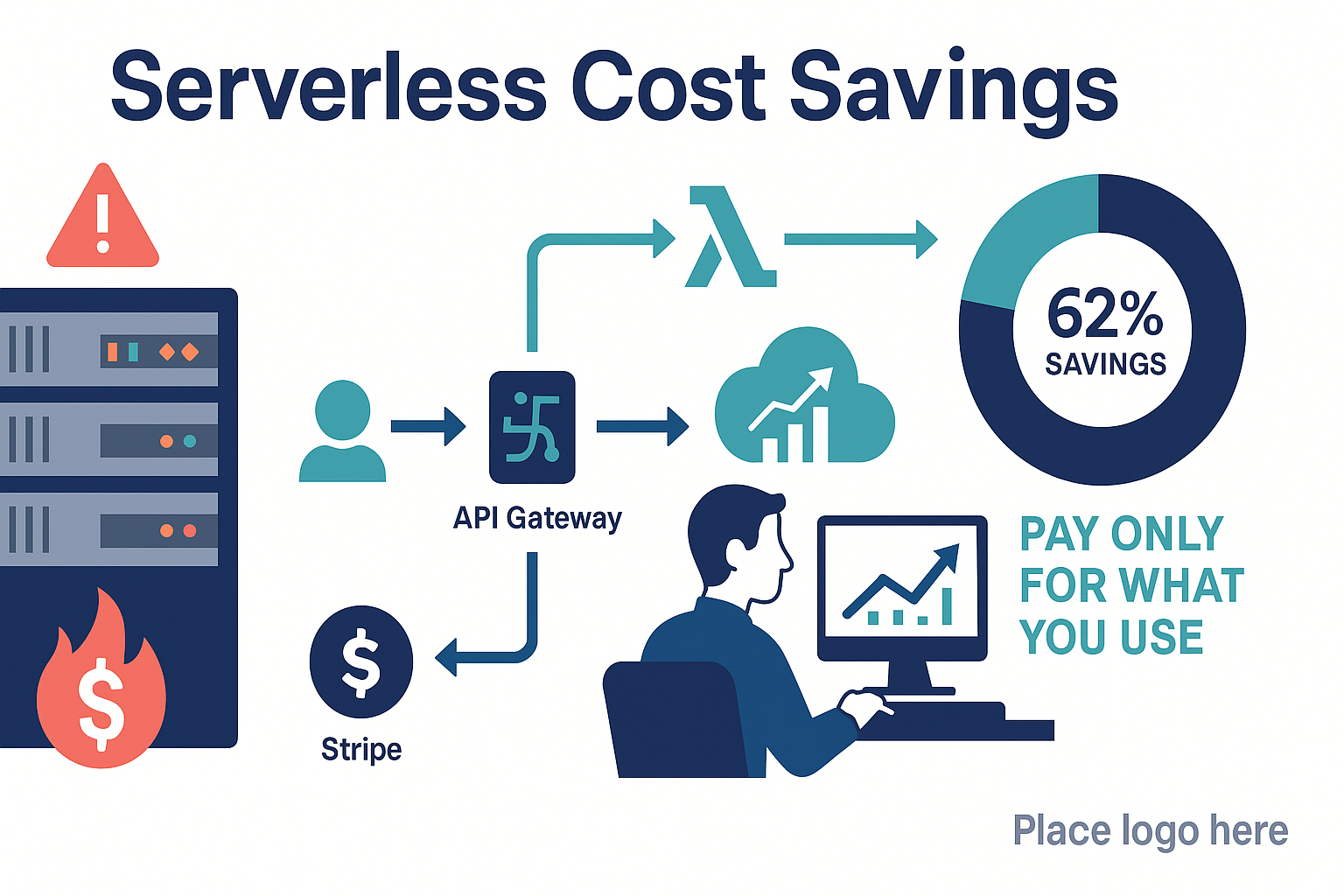
Leave a Reply
You must be logged in to post a comment.